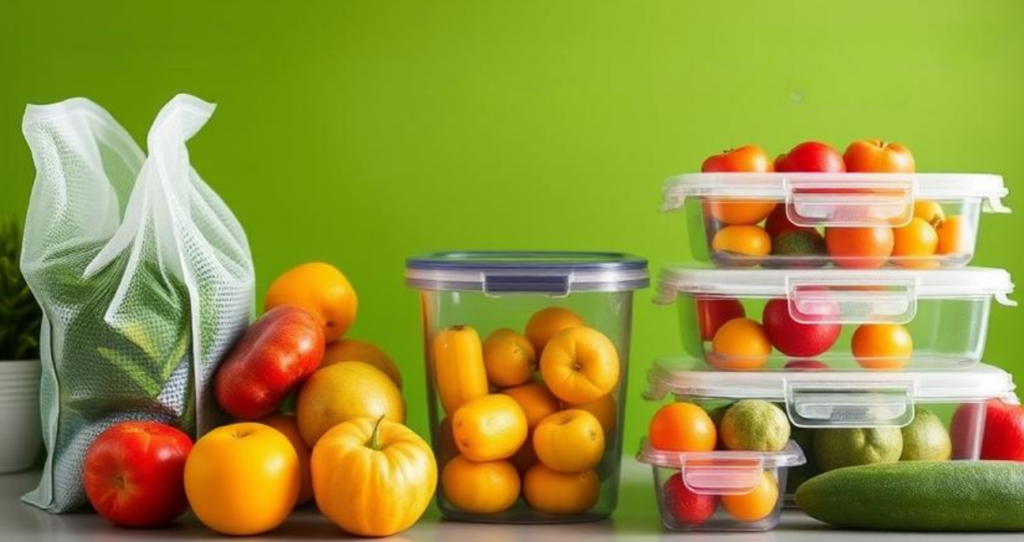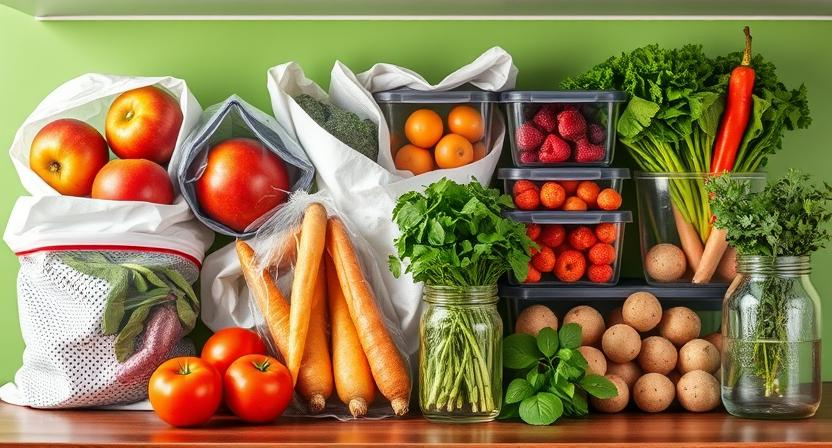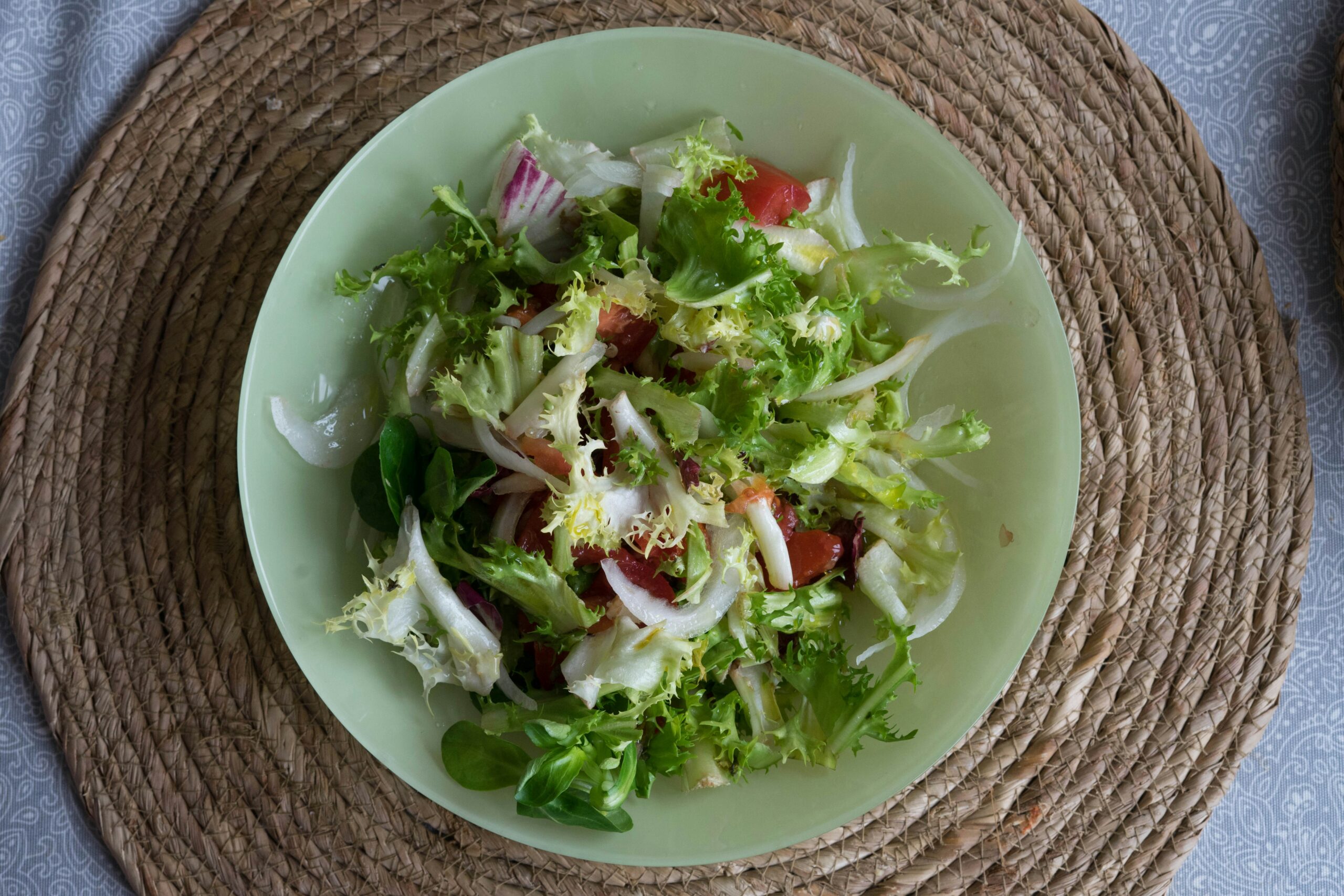Why Proper Storage Matters for Freshness

Proper storage plays a crucial role in maintaining the freshness and quality of fruits and vegetables. When produce is not stored correctly, it can lead to premature spoilage, flavor loss, and nutrient degradation. By understanding the ideal storage conditions for different types of produce, you can prolong their shelf life and minimize food waste.
Temperature control is a key factor in preserving the freshness of fruits and vegetables. Many fruits and vegetables are sensitive to fluctuations in temperature, so it is important to store them in a cool, consistent environment. Storing produce at the optimal temperature can slow down the ripening process and help retain their natural flavors and nutrients for longer periods.
• Improper storage can lead to premature spoilage, flavor loss, and nutrient degradation
• Understanding ideal storage conditions for different produce types is crucial
• Proper temperature control is key in preserving freshness
• Storing produce at optimal temperature can slow down ripening process
The Importance of Temperature Control
Maintaining the correct temperature is crucial for keeping produce fresh and flavorful for as long as possible. Different fruits and vegetables have varying temperature requirements, so it is important to be mindful of this when storing them.
Temperature control helps slow down the natural ripening process of fruits and vegetables, ensuring that they stay fresh and vibrant. Storing produce at the optimal temperature can also help prevent premature spoilage and extend the shelf life of your fruits and vegetables.
– Proper temperature control can also help reduce the growth of harmful bacteria on produce, keeping you and your family safe from foodborne illnesses.
– In addition to maintaining freshness and safety, proper temperature control can also help preserve the nutritional value of fruits and vegetables.
– Improper storage temperatures can lead to wilting, mold growth, or other signs of spoilage, resulting in wasted food and money.
Understanding Humidity Levels
Humidity levels play a crucial role in the storage of fruits and vegetables. Some produce items thrive in higher humidity environments, while others prefer lower levels. For example, leafy greens and herbs tend to do best in higher humidity settings to prevent wilting and dehydration. On the other hand, fruits like apples and oranges require lower humidity to avoid moisture buildup that can lead to mold growth.
It’s essential to understand the specific humidity requirements of the produce you are storing to maintain optimal freshness. Investing in a hygrometer to measure humidity levels in your storage area can help you make necessary adjustments. By creating the ideal humidity conditions for your fruits and vegetables, you can extend their shelf life and minimize waste.
– Leafy greens and herbs thrive in higher humidity environments
– Fruits like apples and oranges require lower humidity levels
– Understanding specific humidity requirements of produce is essential for maintaining freshness
– Investing in a hygrometer can help measure humidity levels in storage areas
– Creating ideal humidity conditions can extend shelf life and minimize waste
Utilizing Ethylene Gas to Your Advantage
Ethylene gas is a natural plant hormone that plays a significant role in the ripening process of fruits and vegetables. While it is important to control the exposure of ethylene gas to certain produce items to prevent premature spoilage, you can also strategically utilize this gas to your advantage. For example, placing unripe fruits such as bananas or avocados in a paper bag with a ripe apple or banana can help expedite the ripening process due to the ethylene released by the ripe fruit.
On the other hand, ethylene-sensitive fruits like berries, grapes, and leafy greens should be stored away from ethylene-producing fruits to prolong their freshness. By being mindful of the ethylene levels in your storage areas and strategically placing produce items accordingly, you can help optimize the ripening process and extend the shelf life of your fruits and vegetables.
• Ethylene gas is a natural plant hormone that aids in the ripening process of fruits and vegetables.
• Placing unripe fruits like bananas or avocados with a ripe apple or banana in a paper bag can speed up the ripening process.
• Ethylene-sensitive fruits such as berries, grapes, and leafy greens should be stored away from ethylene-producing fruits to maintain freshness.
• By strategically placing produce items based on their ethylene sensitivity, you can optimize ripening and extend shelf life.
Separating Fruits and Vegetables
To maintain the optimal freshness and flavor of your fruits and vegetables, it is crucial to store them separately. Fruits, such as apples, bananas, and tomatoes, release ethylene gas as they ripen, which can accelerate the ripening process of other produce items nearby. By keeping fruits and vegetables apart, you can prevent premature spoilage and extend their shelf life.
Additionally, storing fruits and vegetables separately can help prevent cross-contamination and the transfer of flavors between different types of produce. Some fruits emit strong odors that can be absorbed by nearby vegetables, affecting their taste and quality. By storing them in designated areas or containers, you can preserve the unique flavors of each fruit and vegetable, ensuring that they maintain their individual characteristics for longer periods.
• By storing fruits and vegetables separately, you can prevent premature spoilage and extend their shelf life
• Some fruits release ethylene gas as they ripen, which can accelerate the ripening process of other produce items nearby
• Storing them apart helps prevent cross-contamination and flavor transfer between different types of produce
• Strong odors from certain fruits can be absorbed by nearby vegetables, affecting their taste and quality
• Keeping them in designated areas or containers preserves the unique flavors of each fruit and vegetable
Choosing the Right Containers

When it comes to storing fruits and vegetables, choosing the right containers is essential for maintaining their freshness and quality. Opt for containers that are breathable to allow proper air circulation, such as perforated plastic bags or produce storage bags with ventilation holes. These containers help prevent excess moisture buildup, which can lead to spoilage.
Another option is to use glass containers with lids or reusable plastic containers with ventilation vents. These containers provide a secure and airtight environment while still allowing for some airflow. Additionally, clear containers can help you easily identify the produce stored inside, reducing the chances of forgetting about them and letting them go bad. By selecting the appropriate containers for different types of fruits and vegetables, you can prolong their shelf life and minimize food waste in your household.
• Perforated plastic bags or produce storage bags with ventilation holes
• Glass containers with lids or reusable plastic containers with ventilation vents
• Clear containers for easy identification of produce stored inside
Avoiding Direct Sunlight
Exposure to direct sunlight can accelerate the ripening process and lead to premature spoilage of fruits and vegetables. The UV rays in sunlight can break down certain nutrients in produce, affecting their taste and texture. It is crucial to store fresh produce in a cool, shaded area away from direct sunlight to extend their freshness and nutritional value.
Placing fruits and vegetables in a spot where sunlight directly hits them can also cause them to overheat, leading to moisture loss and wilting. For optimal freshness and quality retention, keep your produce stored in a cool, dark place such as a pantry or cabinet. This simple adjustment in storage location can greatly impact the longevity of your fruits and vegetables, ensuring that they remain crisp and flavorful for longer periods.
• Exposure to direct sunlight can accelerate the ripening process and lead to premature spoilage of fruits and vegetables.
• UV rays in sunlight can break down certain nutrients in produce, affecting their taste and texture.
• Store fresh produce in a cool, shaded area away from direct sunlight to extend freshness and nutritional value.
• Placing fruits and vegetables where sunlight directly hits them can cause overheating, leading to moisture loss and wilting.
• Keep produce stored in a cool, dark place like a pantry or cabinet for optimal freshness and quality retention.
Cleaning Before Storage
Before storing your fruits and vegetables, it is crucial to ensure that they are properly cleaned. Washing produce before storage can help remove dirt, bacteria, and any pesticide residue that may be present on the surface. This simple step can help prolong the freshness of your produce and prevent spoilage.
To clean your fruits and vegetables, rinse them thoroughly under running water. For firmer produce like apples or cucumbers, you can use a vegetable brush to scrub the surface and remove any stubborn dirt. Leafy greens should be submerged in a bowl of water and gently agitated to dislodge any dirt or debris. Once cleaned, be sure to pat them dry with a clean cloth or paper towel before storing to prevent excess moisture that can lead to mold growth. Taking the time to clean your produce before storage can make a significant difference in maintaining their quality and extending their shelf life.
• Rinse fruits and vegetables thoroughly under running water
• Use a vegetable brush for firmer produce like apples or cucumbers
• Submerge leafy greens in a bowl of water and gently agitate to remove dirt
• Pat dry with a clean cloth or paper towel before storing to prevent mold growth
Considering Refrigeration Options
When it comes to storing fresh produce, refrigeration is a crucial factor that can significantly impact the longevity of your fruits and vegetables. Most fruits and vegetables benefit from being stored in the refrigerator to maintain their freshness for a longer period. However, it’s essential to consider the specific needs of each item to ensure optimal storage conditions.
Some fruits like apples, berries, and grapes should be refrigerated to slow down the ripening process and extend their shelf life. On the other hand, certain vegetables such as carrots, bell peppers, and leafy greens also fare well in the refrigerator, maintaining their crispness and flavor. Proper refrigeration can help preserve the quality of your produce and reduce the risk of spoilage, allowing you to enjoy them at their best for a longer time.
• Apples, berries, and grapes should be refrigerated to slow down ripening process
• Carrots, bell peppers, and leafy greens also fare well in the refrigerator
• Proper refrigeration can preserve quality of produce and reduce risk of spoilage
Utilizing Crisper Drawers Effectively
When it comes to keeping your fruits and vegetables fresh, utilizing crisper drawers effectively can make a significant difference. These drawers are specifically designed to help control the humidity levels, offering separate compartments for storing different types of produce. By adjusting the humidity settings according to the requirements of your fruits and vegetables, you can help extend their shelf life and preserve their flavor and nutrients for longer periods. Additionally, make sure to regularly clean out the crisper drawers to prevent any mold or bacterial growth that could affect the freshness of your produce.
Proper organization is key when it comes to utilizing crisper drawers effectively. Keep fruits and vegetables that emit ethylene gas, such as apples and bananas, separate from ethylene-sensitive produce like leafy greens and berries. This can help prevent premature ripening and spoilage of your fruits and vegetables. Furthermore, consider using storage bins or containers within the crisper drawers to keep similar types of produce together and avoid overcrowding, which can lead to bruising and faster deterioration. By following these simple tips, you can make the most out of your crisper drawers and ensure that your produce stays fresh and delicious for as long as possible.
– Properly adjust the humidity settings in the crisper drawers based on the type of produce being stored
– Clean out the crisper drawers regularly to prevent mold and bacterial growth
– Keep fruits and vegetables that emit ethylene gas separate from ethylene-sensitive produce
– Use storage bins or containers within the crisper drawers to organize similar types of produce
– Avoid overcrowding in the crisper drawers to prevent bruising and faster deterioration
Wrapping Leafy Greens for Extended Freshness

When it comes to keeping your leafy greens fresh for longer periods, proper storage techniques can make a significant difference. One effective method is to wrap your leafy greens in paper towels before storing them in a resealable bag or airtight container. The paper towel helps absorb excess moisture, maintaining the ideal level of humidity for the greens and preventing wilting. This simple step can extend the freshness of your leafy greens, keeping them crisp and vibrant for salads, smoothies, or cooking.
Additionally, another way to ensure the longevity of your leafy greens is to remove any damaged or wilted leaves before storage. By taking the time to inspect and remove any compromised leaves, you can prevent the spread of moisture and ethylene gas, which can accelerate the spoilage process. Keeping only the freshest leaves will not only prolong the shelf life of your greens but also ensure that you are consuming the highest quality produce.
• Wrap leafy greens in paper towels before storing
• Paper towels help absorb excess moisture and maintain ideal humidity levels
• Prevents wilting and extends freshness of greens
• Remove any damaged or wilted leaves before storage
• Inspect and discard compromised leaves to prevent spread of moisture and ethylene gas
• Keeping only the freshest leaves will prolong shelf life and ensure highest quality produce
Using Paper Bags for Certain Produce
When it comes to storing certain types of produce, utilizing paper bags can be a game-changer. Paper bags are particularly beneficial for fruits and vegetables that release ethylene gas, such as apples, pears, and avocados. When these ethylene-producing fruits are stored in paper bags, it helps to contain the gas and prevent it from speeding up the ripening process of other nearby produce items. This can help extend the freshness and shelf life of your fruits and vegetables.
Additionally, paper bags can also be useful for certain leafy greens and herbs that need a bit of airflow to stay fresh. By loosely wrapping these delicate greens in a paper bag and storing them in the refrigerator, you can help maintain the proper level of moisture while still allowing for some air circulation. This method can help prevent wilting and prolong the crispness of your leafy greens, keeping them fresh for a longer period of time.
• Paper bags are beneficial for storing ethylene-producing fruits like apples, pears, and avocados
• Helps contain ethylene gas and prevent it from speeding up the ripening process of other produce items
• Extends the freshness and shelf life of fruits and vegetables
• Useful for certain leafy greens and herbs that need airflow to stay fresh
• Loosely wrapping delicate greens in a paper bag helps maintain moisture while allowing air circulation
• Prevents wilting and prolongs the crispness of leafy greens
Storing Root Vegetables in a Cool, Dark Place
Root vegetables such as carrots, potatoes, and beets thrive in cool, dark environments that mimic their underground growth conditions. Storing these vegetables in a cool, dark place helps to maintain their freshness and extend their shelf life. The ideal storage location for root vegetables is a spot that is well-ventilated, away from sunlight, and maintains a consistent temperature to prevent sprouting or decay.
When selecting a storage area for root vegetables, aim for a space that is consistently cool, ideally around 32-40°F (0-4°C). Avoid storing these vegetables near heat sources or in areas with fluctuating temperatures. Root vegetables are best kept in a cellar, basement, or refrigerator crisper drawer where the conditions are suitable for preserving their freshness. Additionally, ensure that the storage area is dry to prevent mold or bacterial growth that could affect the quality of the root vegetables.
• Choose a cool, dark storage location for root vegetables
• Aim for a temperature range of 32-40°F (0-4°C)
• Avoid storing near heat sources or in areas with fluctuating temperatures
• Ideal storage spots include cellars, basements, or refrigerator crisper drawers
• Ensure the storage area is well-ventilated and dry to prevent mold or bacterial growth
Utilizing Storage Bins for Organization
Storage bins can be valuable tools for keeping your produce organized and easily accessible. When choosing storage bins, opt for transparent containers to easily identify the contents inside. Labeling each bin can also help you quickly locate specific fruits and vegetables when needed. Consider using smaller bins for items like berries or cherry tomatoes that can easily get lost in larger containers. This organization system can help prevent produce from being forgotten at the back of the fridge, leading to less food waste.
Additionally, using storage bins can help maximize space in your refrigerator or pantry. Stackable bins allow you to utilize vertical space efficiently, making the most out of your storage areas. This method can also prevent fruits and vegetables from getting crushed or bruised by heavier items placed on top of them. Keep in mind to regularly check and rotate the produce in your bins to ensure that nothing gets overlooked and spoils prematurely. By incorporating storage bins into your organization strategy, you can maintain a well-organized and efficient system for storing your fresh produce.
• Choose transparent containers for easy identification of contents
• Label bins to quickly locate specific fruits and vegetables
• Use smaller bins for items that can easily get lost
• Stackable bins help maximize vertical space in refrigerator or pantry
• Prevent crushing or bruising of produce by heavier items on top
• Regularly check and rotate produce to prevent spoilage
Freezing Produce for Long-Term Storage
When freezing produce for long-term storage, it is essential to properly prepare the items to maintain their quality. Start by cleaning and cutting the fruits or vegetables into sizes that are convenient for later use. Make sure to remove any seeds, pits, or tough parts before packaging. It’s also crucial to blanch certain vegetables like broccoli, green beans, or corn to preserve their color, texture, and flavor before freezing. This process involves briefly immersing the produce in boiling water, followed by an immediate plunge into ice water to halt the cooking process.
Once the produce is prepped, choose suitable containers or freezer bags for storage. It’s best to remove as much air as possible from the packaging to prevent freezer burn. Label each container with the date of freezing and the contents to keep track of what’s inside. Remember to allow enough space for expansion in containers to avoid bursting. Place the produce in the coldest part of the freezer to ensure rapid freezing, which helps maintain the quality of the items for an extended period.
• Clean and cut fruits or vegetables into convenient sizes
• Remove seeds, pits, or tough parts before packaging
• Blanch certain vegetables like broccoli, green beans, or corn
• Choose suitable containers or freezer bags for storage
• Remove air from packaging to prevent freezer burn
• Label containers with date of freezing and contents
• Allow space for expansion in containers to avoid bursting
Preserving Fresh Herbs in Water

To extend the shelf life of fresh herbs, consider placing them in a jar of water as if they were a bouquet of flowers. This method can help keep the herbs hydrated and vibrant for a longer period. Trim the stems at an angle before placing them in the water to allow for better absorption. Change the water every few days to prevent any buildup of bacteria and to ensure the herbs stay fresh.
Certain herbs like basil, cilantro, and mint benefit greatly from being stored in water. By following this simple technique, you can preserve the flavor and quality of the herbs, making them last longer than if they were stored in the refrigerator or left out at room temperature. Displaying the herbs in water can also add a touch of greenery to your kitchen space, giving you easy access to fresh herbs whenever you need them for cooking or garnishing dishes.
• To extend the shelf life of fresh herbs, consider placing them in a jar of water
• Trim the stems at an angle before placing them in the water for better absorption
• Change the water every few days to prevent bacteria buildup
• Certain herbs like basil, cilantro, and mint benefit greatly from being stored in water
• Preserving herbs in water can help maintain flavor and quality longer than refrigeration or room temperature storage
• Displaying herbs in water adds greenery to your kitchen space and provides easy access for cooking or garnishing dishes.
Extending Shelf Life with Vacuum Sealers
Vacuum sealers are a valuable tool in extending the shelf life of your produce, meats, and other perishable items. By removing the air from the packaging, vacuum sealers create an airtight environment that helps prevent spoilage and freezer burn. This method can significantly prolong the freshness of your food items, allowing you to enjoy them for longer periods without compromising on quality.
In addition to preserving the freshness of your food, vacuum sealers can also help you save money by reducing waste. By properly sealing and storing your items, you can avoid premature spoilage and extend the life of your groceries. This can be especially beneficial for bulk purchases or seasonal produce, allowing you to enjoy your favorite foods year-round while minimizing food waste.
• Vacuum sealers create an airtight environment by removing air from the packaging
• Prevents spoilage and freezer burn
• Prolongs the freshness of food items without compromising quality
• Helps save money by reducing waste
• Properly sealing and storing items can avoid premature spoilage
• Extends the life of groceries, especially beneficial for bulk purchases or seasonal produce
Checking and Rotating Produce Regularly
Regularly checking and rotating your produce is essential in maintaining freshness and preventing spoilage. By inspecting your fruits and vegetables frequently, you can discard any items that show signs of decay or overripeness. Additionally, rotating your produce ensures that older items are used first, reducing waste and promoting a more efficient use of your inventory.
Implementing a routine for checking and rotating produce not only helps in preserving freshness but also assists in maximizing the nutritional value of your fruits and vegetables. By being proactive in monitoring and managing your produce, you can enjoy a longer shelf life for your items and make the most out of your investment in fresh ingredients.
• Regularly checking and rotating produce is essential for maintaining freshness
• Inspect fruits and vegetables frequently to discard any items showing signs of decay
• Rotating produce ensures older items are used first, reducing waste
• Promotes efficient use of inventory
• Helps maximize nutritional value of fruits and vegetables
• Enjoy longer shelf life for your items by being proactive in monitoring produce
• Make the most out of your investment in fresh ingredients
Avoiding Overcrowding in Storage Areas
When storing fruits and vegetables, it is essential to avoid overcrowding in your storage areas. Overcrowding can lead to increased moisture retention and hinder air circulation, which can promote the growth of mold and reduce the freshness of your produce. By allowing ample space between items, you can help maintain optimal conditions for each fruit and vegetable to stay fresh longer.
Properly spacing out your produce also helps prevent bruising and damage that can occur when items are piled on top of each other. Delicate fruits like berries and leafy greens are particularly susceptible to bruising, so giving them room to breathe can help maintain their quality. Additionally, avoiding overcrowding in your storage areas makes it easier to visually inspect your produce regularly, allowing you to remove any items that are starting to spoil and prevent them from affecting the rest of your fruits and vegetables.
• Proper spacing between items helps maintain optimal conditions for freshness
• Prevents bruising and damage to delicate fruits and vegetables
• Easier visual inspection of produce to remove any spoiled items
Utilizing Produce-Specific Tips for Optimal Freshness
For berries like strawberries and blueberries, it’s best to store them in the refrigerator without washing them first. Before consuming, give them a gentle rinse under cold water. Leafy greens such as spinach and kale should be stored in a paper towel-lined container in the refrigerator to absorb excess moisture. To keep mushrooms fresh, store them in a paper bag in the refrigerator and avoid sealing them in a plastic bag, which can promote moisture buildup.
When it comes to tomatoes, keep them at room temperature away from direct sunlight to maintain their flavor and texture. Onions and garlic should be stored in a cool, dry place with good air circulation, but avoid storing them near potatoes as it can cause them to sprout prematurely. Citrus fruits like oranges and lemons can be stored at room temperature but will last longer in the refrigerator if you don’t plan on consuming them right away.
• Berries like strawberries and blueberries should be stored in the refrigerator without washing them first
• Leafy greens such as spinach and kale should be stored in a paper towel-lined container in the refrigerator
• Mushrooms should be stored in a paper bag in the refrigerator to prevent moisture buildup
• Tomatoes should be kept at room temperature away from direct sunlight
• Onions and garlic need to be stored in a cool, dry place with good air circulation
• Citrus fruits can be stored at room temperature but will last longer in the refrigerator



